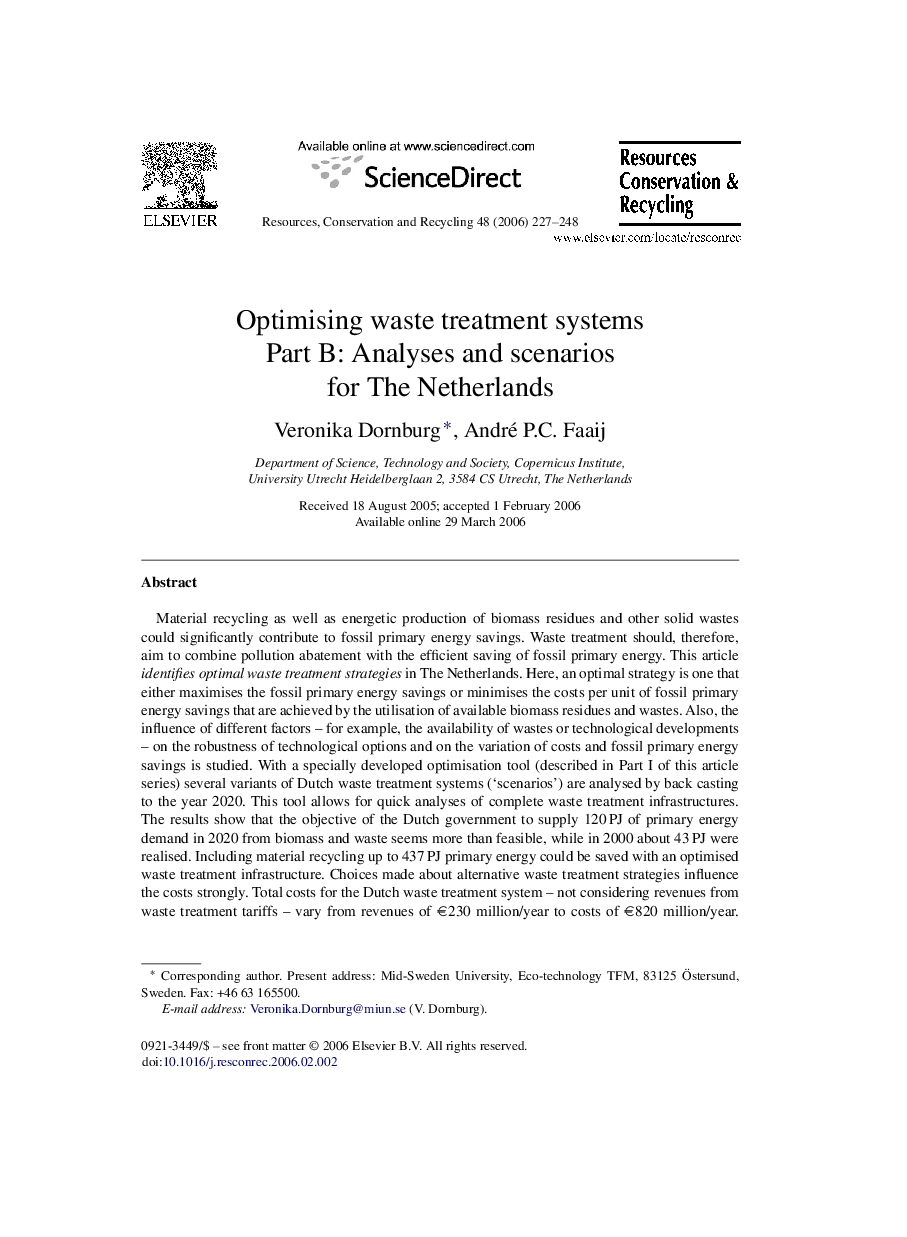| Article ID | Journal | Published Year | Pages | File Type |
|---|---|---|---|---|
| 1063967 | Resources, Conservation and Recycling | 2006 | 22 Pages |
Material recycling as well as energetic production of biomass residues and other solid wastes could significantly contribute to fossil primary energy savings. Waste treatment should, therefore, aim to combine pollution abatement with the efficient saving of fossil primary energy. This article identifies optimal waste treatment strategies in The Netherlands. Here, an optimal strategy is one that either maximises the fossil primary energy savings or minimises the costs per unit of fossil primary energy savings that are achieved by the utilisation of available biomass residues and wastes. Also, the influence of different factors – for example, the availability of wastes or technological developments – on the robustness of technological options and on the variation of costs and fossil primary energy savings is studied. With a specially developed optimisation tool (described in Part I of this article series) several variants of Dutch waste treatment systems (‘scenarios’) are analysed by back casting to the year 2020. This tool allows for quick analyses of complete waste treatment infrastructures. The results show that the objective of the Dutch government to supply 120 PJ of primary energy demand in 2020 from biomass and waste seems more than feasible, while in 2000 about 43 PJ were realised. Including material recycling up to 437 PJ primary energy could be saved with an optimised waste treatment infrastructure. Choices made about alternative waste treatment strategies influence the costs strongly. Total costs for the Dutch waste treatment system – not considering revenues from waste treatment tariffs – vary from revenues of €230 million/year to costs of €820 million/year. The contributions of material and energy recycling to avoid primary energy use change significantly under different preconditions. In the 11 different scenarios considered, of the primary energy savings achieved 25–76% resulted from material recycling, 20–80% from heat and electricity production, and a more modest 0–21% from the production of transport fuel. (Biomass) integrated gasification with combined cycle, hydro-thermal upgrading and waste separation emerge as key technologies from this study, while for example, waste incineration and biomass co-firing in coal power plants do not come out as most attractive options for the longer term. Generally, large-scale conversion units seem favourable to achieve better economies and energy recovery.
